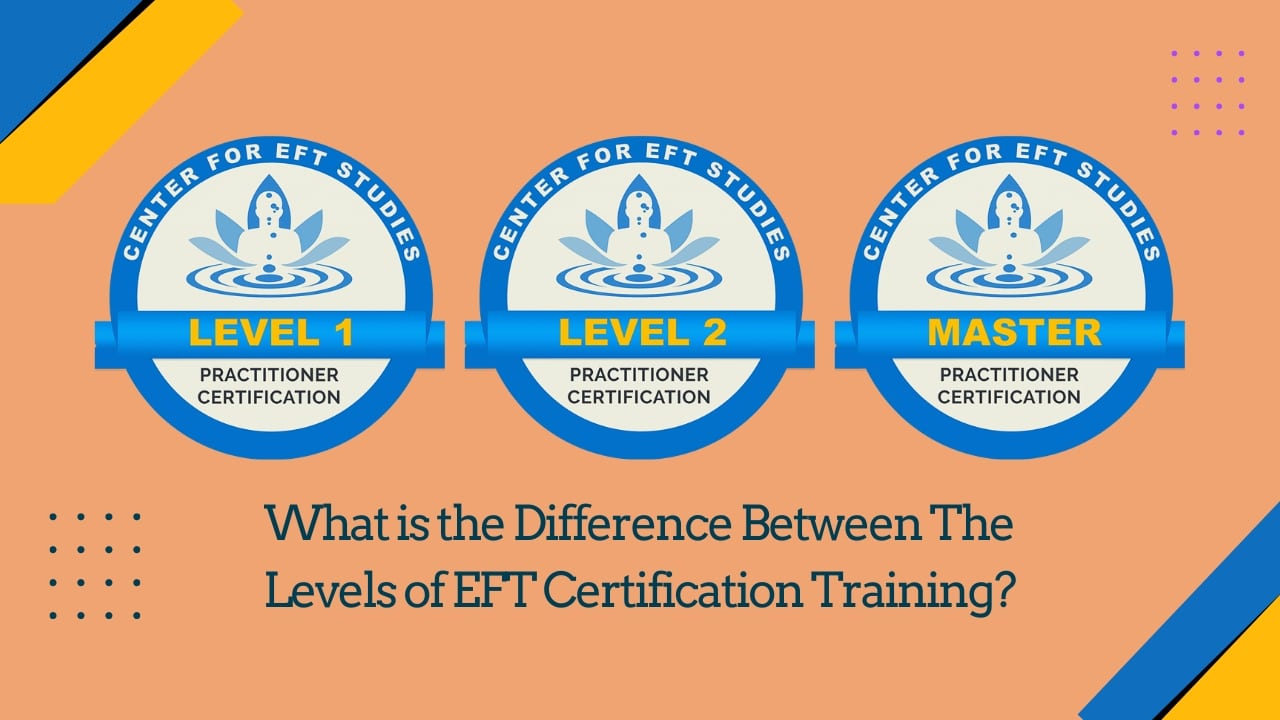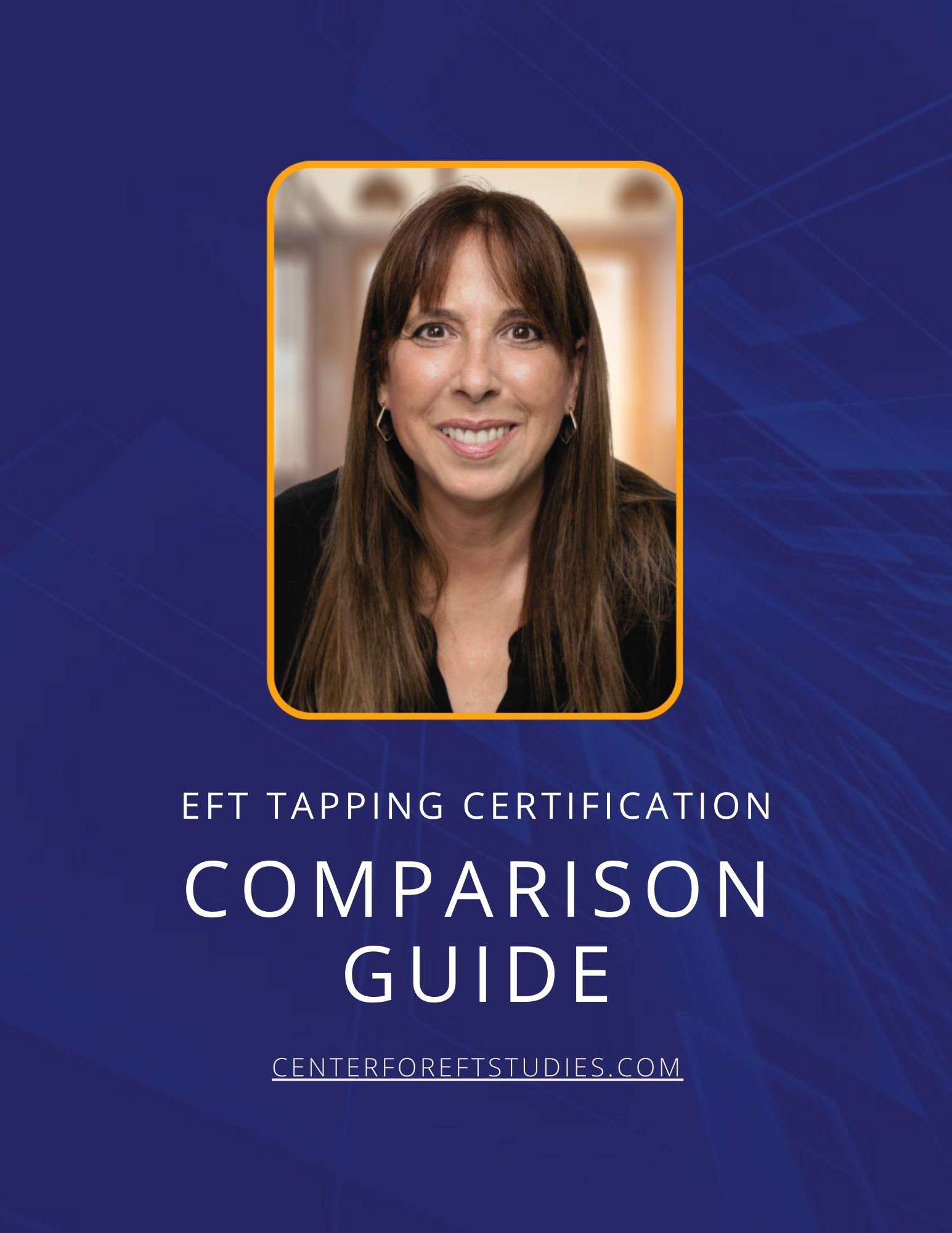
Many people ask, what is the difference between the different levels in EFT Tapping training? What is the right choice for you? Should you take levels 1 and 2 or is it better to jump into the Master’s program right away?
In this video, EFT Master Instructor Deborah Lindsey answers the question, What is the difference between levels 1, 2, and 3 in EFT Tapping Training?
She carefully shows the purpose of each level and the effect it will have on your overall knowledge of EFT.
So, yeah, I’ve added a picture of my city behind me. But today, I want to talk about the difference between levels 1, 2, and 3 of EFT tapping training.
People ask me all the time, what do I need?
So for three levels, level one, two, and three, where level three is master training.
So in level one, you will learn how to use EFT to work on yourself, to heal yourself.
And all of the practice sessions is such that you’re going to do in level one are all directed at healing yourself.
And there’s a really important reason for that. It is that I think in order to be a really great practitioner, you have to first experience EFT in your own life and I think you have to come to the table as someone who has done their own work. If you sit across from someone else and you are there to help them, but you have not done any of your own work yet, you’re not a very effective practitioner.
So I think that’s level one.
So step two is where you become a professional practitioner.
You’re going to learn a lot of the techniques that you learn that you need in order to work with other people. And in level two, you are working with real clients.
First, you work with other students in the class so you can practice and learn from each other and make mistakes. And that’s all part of the process, right, is to be really crappy before you get good.
So if you’re going to be crappy and get crappy, get crappy, crappy, working with other students who are also going through the same process by the end of level two, you have the skill set to work with other people and you are a certified practitioner at that stage.
You can work with other people. In fact, as part of the class, you do work with other people.
So first you start by working on other students and then you are working with people in your community so you can have that experience. So by the time you graduate level two. I want you to be comfortable working with clients and I want you to embody a skill set.
Now, what is the difference between level two and level three? So level two is really about working with what I call issue-based clients.
So what’s an issue-based client and issue-based client is somebody who has a phobia or a craving or a headache, some kind of pain, and it goes deeper than that.
But issue-based clients are really the main gist of what you learn in level two by the time you get to level three.
So level three is about working with what I call life clients. So what is that? A life client is someone who has constant chronic trauma or a lot of issues to work with.
You’re not just healing an issue when you’re working with a client. You are working on a whole person a whole life.
How do you know the difference? Well, I’ll tell you. When you sit down in front of a live client in that first session, they’re going to just vomit their life at you.
And oftentimes it’s someone who comes with a difficult history, whether it’s an abusive childhood or an abusive marriage or a lot of different related experiences.
And so for people who take level 2 training, oftentimes these people are scary and confounding because they sit down in front of them and they don’t know where to start.
And what you do in level two is you take an issue and you work on the issue and then the client gets well. And it’s fast.
But when that person sits down in front of you and they have 50 different issues, what happens is that someone who doesn’t have the level three training often gets pulled around by the tail, if that makes any sense, like you’re following this issue and then that issue and then this issue and then that issue.
And you can’t figure out quite how to control the session, how to how to get them from point A to point B.
And at the end of the session, you’re tired and the client doesn’t feel any change because you don’t know how to handle someone who has a lot of different issues going on.
So in level three, you learn how to follow the power. So that may not make any sense right now.
But when somebody is really struggling, it’s because they’re leaking power all over the place and your job becomes discovering where those leaks are and helping them to sort of shore up all of those different leaks and bring them back to a place where they have their whole self available to live their life. I hope that makes some sense.
But we also learn how to work on childhood issues more, we learn how to do perspective switching, which we learn how to do a lot of very advanced techniques that you aren’t going to necessarily get in levels one or two.
Now by the time you get to level 2, you’re a really good practitioner and you have a skill set to go out and help people. No doubt about it.
Level three is for those people who are really, really in, you know, you know you want to be a great practitioner.
You know, you want to really be able to solve problems, not solve problems for but help people to solve problems, who have a lot of stuff going on whose whole life might be a disaster.
For some of us, that’s really a glorious experience to take somebody who is really living a marginalized life and help them to begin living a full life like that. Crazy good experience for some of us.
Other people are overwhelmed by it. They don’t want to do that. They want to help people to overcome their beliefs. So they want to help people to be happier or to deal with some basic issues. But they don’t really want to dig in and do the hard, hard work.
It really depends on who you are as a person, what you enjoy, who you are as a practitioner, who your client base is, whether or not you need level one, level two, and level three.
Some of you just want to heal yourselves. Even for that level 2 is highly recommended because the techniques that you need to really get in there, come up in them, too.
So I hope this helps to explain the difference between one, two, and three and helps you to make a decision as to where you want to go.
For a lot of people, I think the best thing to do is to start with the one and two combined training and then find out if it really is something you have a deep passion for and then and then dive into level three later.
Some of you already know. You already know going into it. You want the whole kit and caboodle. You want one, two, and three.
And you want to come out of it able to work with people with really significant issues, in which case dive into all three.
From the beginning, there’s something about that commitment of knowing from the beginning that you are going the distance that I think really helps to propel you through the training.
But again, you have to look at your own life and decide who you are and what you want to do and then decide. But that’s the difference between the three levels.
I hope it helps guys see in the EFT certification training.
Join our email list to keep abreast of all things EFT!
© 2022 Center for EFT Studies – onlineEFTcertification.com
